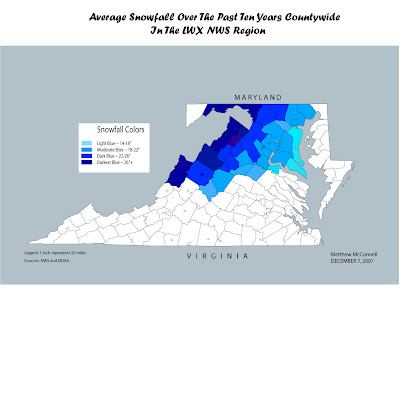
5 links:
This link is the Climate Prediction Center in which you can find out any information you want ranging from Tropical Weather to Winter Weather.
The National Weather Service Homepage. Need to know the weather for anywhere in the US within the next 7 days? Here is where you can get easy access to it.
This website shows you the average snowfall through 2002 of all the major cities across the 50 states (including Hawaii and Alaska). The data varies though on when the city or airport near the region began taking measurements -- DC began in 1943 while New York City in Central Park began 134 years ago.
This is a useful website that I found that shows how much snow a city with a population of at least 50,000 gets per winter on average. (Top 101 Cities in the US)
LWX's (Sterling WFO) Climate Page. This website can tell you the average snowfall at KIAD, KDCA, KBWI, and more. It also can give you exact amounts of how much snow fell in past years, though it depends on the airport you are closest to.





